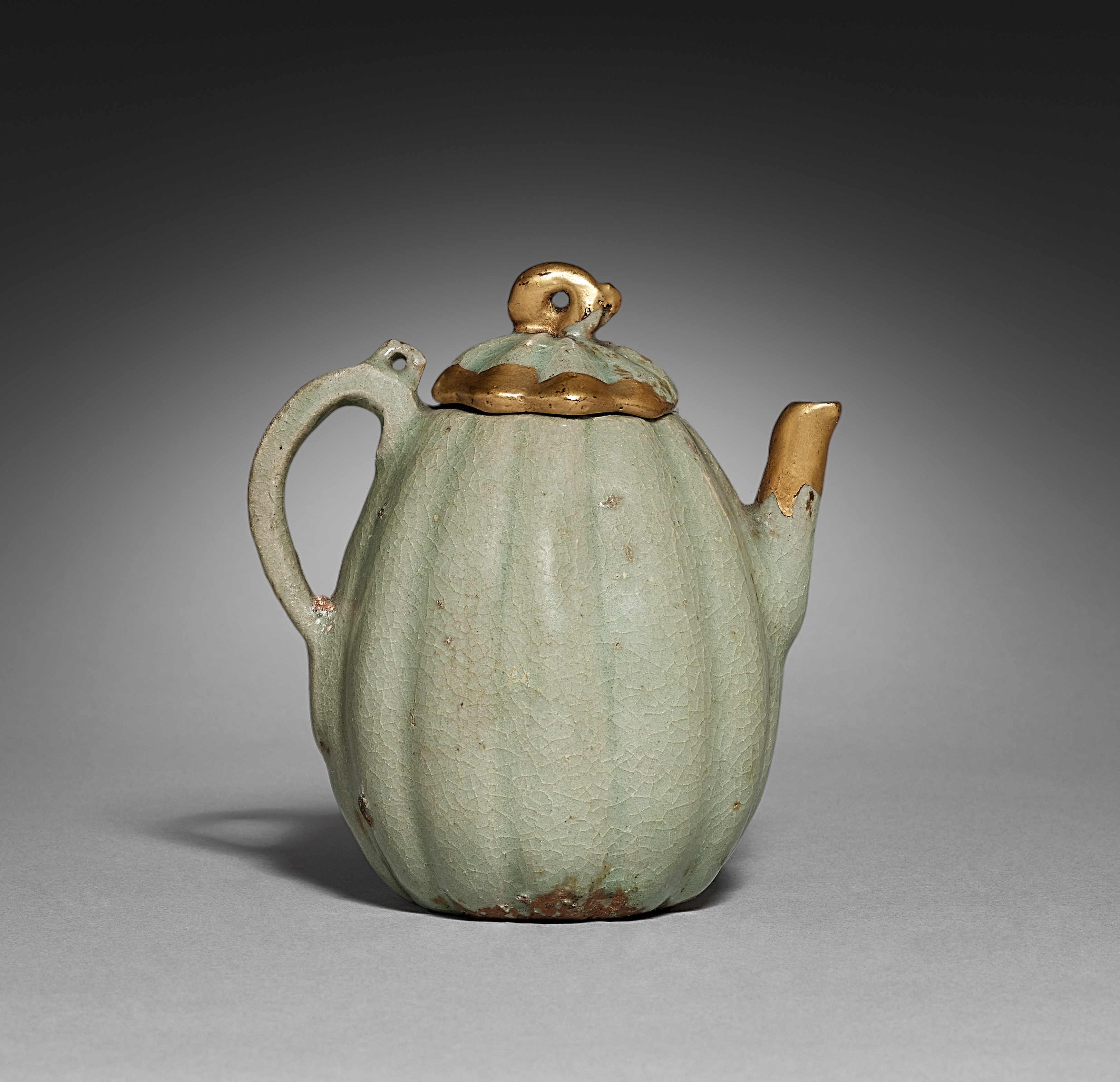The Cleveland Museum of Art
Collection Online as of April 19, 2024

Melon-shaped Wine Ewer
1100s-1200s
(918–1392)
Outer diameter: 6.7 cm (2 5/8 in.); height with lid: 9 cm (3 9/16 in.)
Gift of John L. Severance 1928.173
Location: not on view
Did You Know?
This miniature wine pot was buried in a tomb for the soul of the deceased.Description
Many celadon ceramics, such as these two miniature pots, have been repaired with gold lacquer. Termed kintsugi (literally meaning “gold joinery”) in Japanese, this restoration method highlights broken parts with glittering gold mixed with lacquer. Initiated in 15th-century Japan, the technique follows a popular aesthetic concept called wabi-sabi, which finds beauty in imperfect things. Goryeo celadons were considered rare treasures among early 20th-century Japanese collectors; thus, their broken condition is brilliantly highlighted in gold lacquer, as seen here in the repaired spouts, handle, and lid.- (Dr. A. I. Ludlow [1875–1961], Cleveland, OH, sold to John L. Severance)?–1928John L. Severance [1863–1936], Cleveland, OH, given to the Cleveland Museum of Art1928–The Cleveland Museum of Art, Cleveland, OH
- Goryeo Dynasty: Korea's Age of Enlightenment, 918-1392. San Francisco: Asian Art Museum, 2003.Goryeo: The Glory of Korea [대고려, 그 찬란한 도전]. Seoul: National Museum of Korea, 2018.Sparkles of Jade: Goryeo Celadon [高麗青磁 : ヒスイのきらめき]. Ōsaka: Ōsaka: Shiritsu Tōyō Tōji Bijutsukan, 2018.
- Interpretation of Materiality: Gold (Korean art rotation). The Cleveland Museum of Art, Cleveland, OH (organizer) (April 29-October 24, 2021).Mountains and Rivers Beyond the DMZ – Korean Gallery 236 Rotation. The Cleveland Museum of Art (organizer) (January 21-July 21, 2019).
- {{cite web|title=Melon-shaped Wine Ewer|url=false|author=|year=1100s-1200s|access-date=19 April 2024|publisher=Cleveland Museum of Art}}
Source URL:
https://www.clevelandart.org/art/1928.173